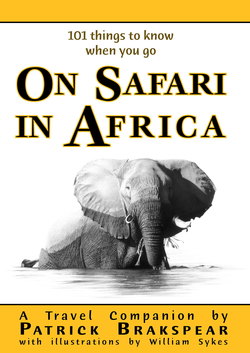Читать книгу (101 things to know when you go) ON SAFARI IN AFRICA - Patrick Brakspear - Страница 11
На сайте Литреса книга снята с продажи.
Olduvai Gorge, Tanzania
ОглавлениеOlduvai Gorge is a steep-sided ravine in the Great Rift Valley bordering the Serengeti National Park in Tanzania. It is one of the most important prehistoric sites in the world and has been instrumental in furthering understanding of early human evolution. Excavation work there was pioneered by Louis and Mary Leakey in the 1950s and is continued today by their family. It is thought that millions of years ago the site was that of a large lake, the shores of which were covered with successive deposits of volcanic ash. Fossil remains of human ancestors have been found from as long as 2.5 million years ago. They are not of modern humans but primitive hominid forms of Paranthropus boisei and the first discovered specimens of Homo habilis. Artifacts of Homo erectus, dating back 1.5 million years, have also been located here together with fossil bones with Neanderthal characteristics from around 600,000 years ago. The Olduvai Gorge bears the distinction of having earliest human skull in the world; Zinjanthropus, commonly known as 'Nutcracker Man', and the oldest known evidence of mammoth consumption attributed to Homo erectus, around 1.8 million years ago.
The name Olduvai originated from a European misspelling of Oldupai, the correct Maasai word for the wild sisal plant growing in abundance in the gorge. There is a museum on site where visitors can listen to lectures and see visual representation of the discoveries made in the region. Some 45 km south of Olduvai Gorge a series of hominid footprints, known as the Laetoli prints, can be found. For the present, the site has been closed so as to preserve the prints, but reproductions of them can be seen at the Olduvai Museum. Discovered in 1972, the 3.7 million year-old footprints are thought to be those of a family group who were fleeing from an erupting volcano. Imprinted in the volcanic ash spewing from the volcano, the prints, which run for about 100 meters, seem to suggest the presence of two adults and a child. Judging by the balance of weight on the prints, experts have deduced that the child turned back to look over its shoulder, perhaps at the volcano, but that one of the adults also turned back to urge the child forward and away from the approaching danger. Poignant and eerily immediate, this touching family moment has been frozen in time; a snapshot of our earliest relatives Homo habilis (handy man) Homo erectus (standing man) and Homo sapiens (wise man).
